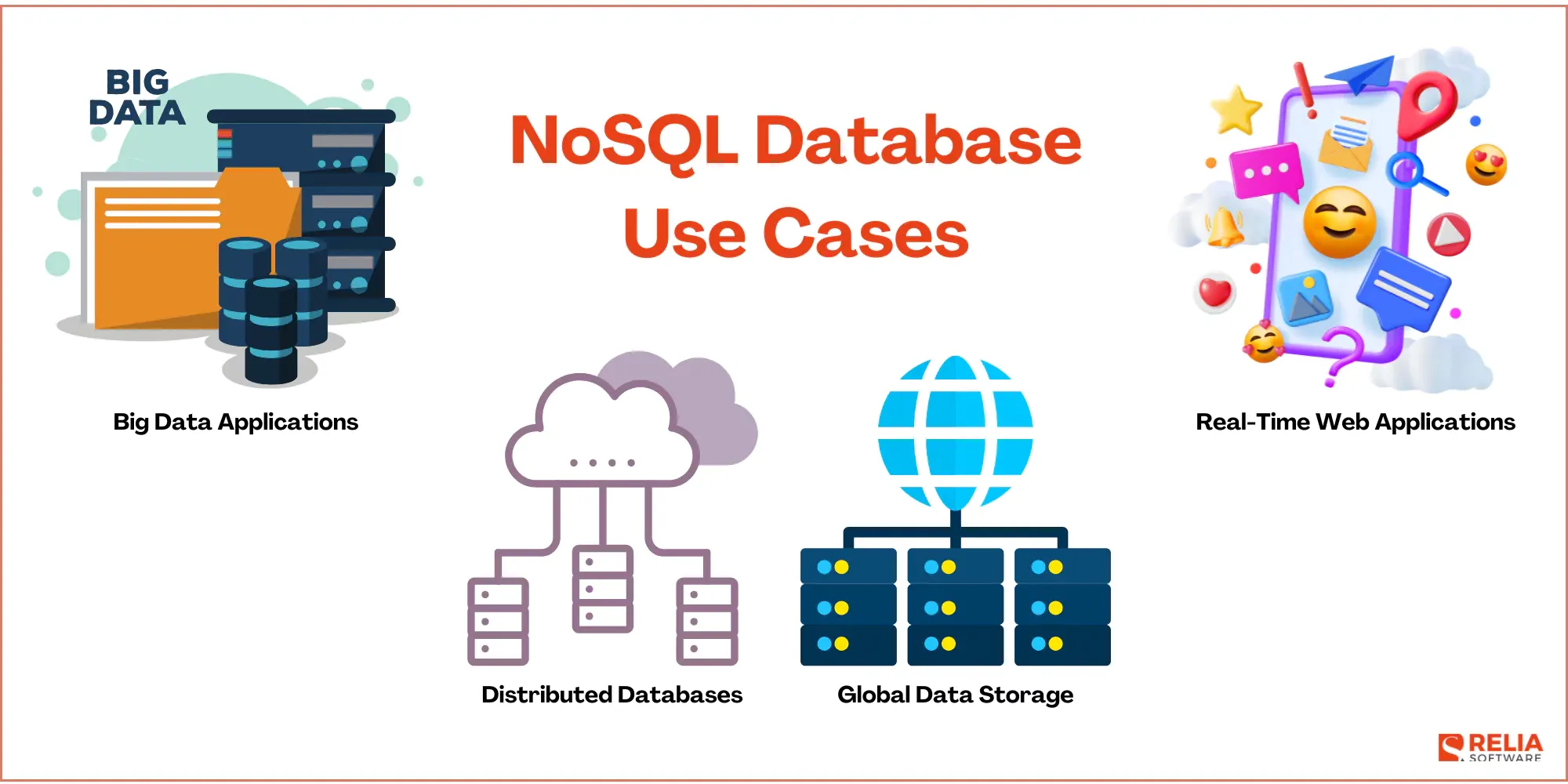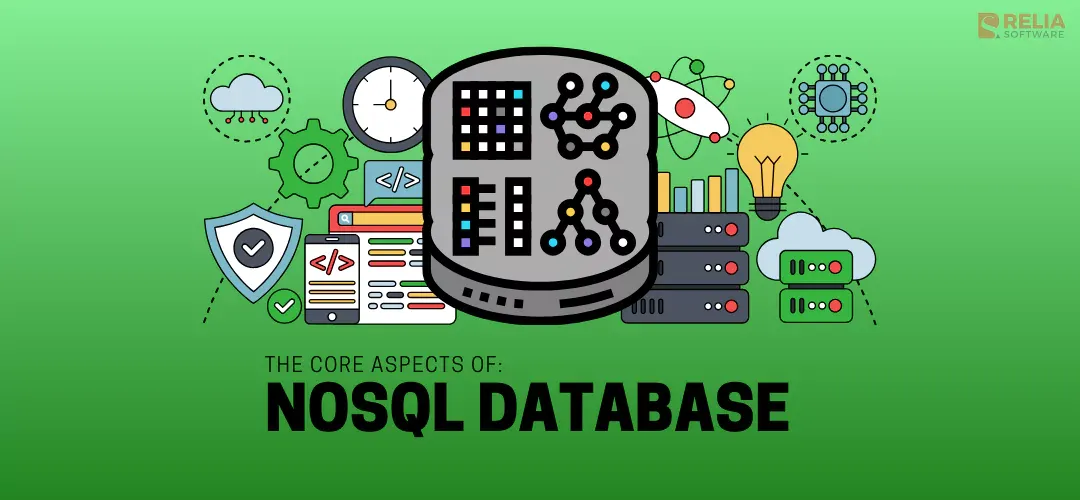NoSQL databases, or 'Not Only SQL,' address the limitations of traditional relational databases by offering flexible, schema-less storage that efficiently handles large volumes of unstructured data. This adaptability makes NoSQL an ideal choice for data-heavy applications like social media, e-commerce, and IoT, where high scalability, speed, and performance are essential.
This article delves into the core aspects of NoSQL databases—their definition, types, benefits, and ideal use cases—to reveal how they meet the demands of modern, data-driven applications.
>> Databases-related topics:
- Database Scaling Explained: A Guide to Efficient Growth
- Mastering Index in SQL to Improve Database Performance
- Understanding 6 Different Types of Indexes in SQL
Brief History and Evolution of NoSQL
Relational databases (SQL databases) introduced in the 1970s brought structured data management with fixed schemas, ACID compliance, and SQL for querying. They became the standard for managing structured data, supporting business applications with reliable transactions. However, as big data and web-scale applications emerged, SQL databases faced limitations in scalability, flexibility, and handling unstructured data like text, images, and JSON.
Modern applications increasingly needed real-time processing, high scalability, and diverse data structures, but SQL systems struggled due to monolithic design and rigid schemas. These challenges led to the rise of NoSQL databases—schema-less, horizontally scalable, and flexible models capable of meeting the demands of applications like social media, e-commerce, and IoT.
Thus, NoSQL databases emerged as a powerful alternative, providing the speed, scalability, and adaptability that SQL systems couldn’t easily match for modern, data-driven applications.
What is NoSQL Database?
A NoSQL database, also known as "not only SQL" or "non-relational," is a database management system designed to store and retrieve data without relying on the structured tables of traditional relational databases. This flexibility allows NoSQL databases to handle large volumes of unstructured and semi-structured data with high scalability and performance.
Key Differences Between SQL and NoSQL: SQL databases rely on rigid schemas, structured tables, and ACID compliance. In contrast, NoSQL databases offer schema flexibility, eventual consistency, and horizontal scalability, allowing for rapid processing and distributed data storage.
With a schema-less setup, NoSQL allows varied data types and structures within the same database. This adaptability supports evolving data needs and reduces migration tasks.
What Are the 4 Types of NoSQL Databases?
Let’s explore Document-Based, Key-Value, Column-Family, and Graph— the 4 NoSQL database types with examples and their unique features.
Document-Based Databases
Example: MongoDB, CouchDB, RethinkDB, etc.
Document databases store data as self-contained documents, usually in JSON or BSON formats. Each document can have a unique structure, enabling flexibility for data models that change over time. Fields within documents can hold complex data types, like nested documents or arrays, allowing a schema-less setup that is agile in development.
Document databases are commonly used in content management systems, e-commerce, and applications that need flexible data models without frequent schema updates.
However, schema flexibility can sometimes lead to inconsistent data structures, and complex queries may be limited compared to relational databases.
Key-Value Databases
Example: Redis, DynamoDB, Amazon SimpleDB, etc.
Key-value databases organize data as collections of unique key-value pairs. Each key identifies a value, which can vary from a simple string, number, boolean, to more complex data, depending on the database’s capabilities. This straightforward structure provides high-speed read and write operations by retrieving data solely through its unique key, which is particularly beneficial for real-time applications, caching, and session management.
Designed to handle high traffic and distributed workloads, key-value stores are highly scalable and effective in applications demanding speed and simplicity. However, their structure makes complex, multi-dimensional queries difficult as they are optimized for single-key retrieval.
Column-Family Databases
Example: Cassandra, HBase, Hypertable etc.
Column-family databases store data in columns rather than traditional rows, organizing them into column families for efficient data handling, especially with wide rows or high data volumes. This structure allows optimized reads and writes for specific columns, increasing performance for large-scale datasets.
Column-family databases are ideal for time-series data, IoT applications, and cases requiring fast access to expansive datasets. Thanks to their horizontal scaling abilities, they are well-suited for distributed systems and data-intensive tasks that need high write throughput and fault tolerance. However, modeling complex relationships can be challenging, and they offer less flexibility than document databases.
Graph Databases
Example: Neo4j, Amazon Neptune, FlockDB, etc.
Graph databases specialize in managing and analyzing relationships between data points by structuring data as nodes (entities), edges (relationships), and properties (attributes).
This model allows for efficient traversal of relationships, making it suitable for applications like social networks, recommendation engines, fraud detection, and supply chain management, where connections between data points are vital. Graph databases enable fast and insightful queries into how entities interconnect, supporting complex data analysis in relationship-driven use cases.
While powerful for connected data, they may be less efficient with unrelated data types or simple lookups and often require specialized query languages.
>> You may consider: Vector Database vs Graph Database: Which One Is Better?
NoSQL’s variety in data models—document, key-value, column-family, and graph—allows for tailored storage solutions based on specific application needs, making it highly adaptable for modern, data-intensive applications.

4 Key Advantages of NoSQL Databases
Scalability: NoSQL databases are designed for horizontal scalability, allowing data distribution across multiple servers or nodes. Unlike traditional SQL databases, which generally scale vertically by adding resources to a single server, NoSQL's horizontal scaling can handle growing data volumes and high user loads cost-effectively.
Flexibility: NoSQL’s schema-less design supports structured, semi-structured, and unstructured data within the same database, allowing for adaptable data models as needs evolve. This flexibility is especially valuable for dynamic applications, like content management and real-time analytics, where data structures may frequently change, promoting agile development and reducing time to market.
High Availability and Fault Tolerance: Typically distributed across multiple nodes, NoSQL databases are high available and resilient. Many NoSQL systems use replication and sharding to ensure that data is stored redundantly across different servers, allowing the system to stay operational even if some nodes go down. This distributed design makes NoSQL databases suitable for mission-critical applications requiring high availability.
Performance: Optimized for fast data retrieval, NoSQL databases manage high volumes of data with low latency and high throughput. Their distributed architecture allows for fast reads, writes, and concurrency, ideal for real-time applications such as gaming, messaging systems, and IoT platforms, where quick response times are crucial.
Challenges and Considerations with NoSQL Databases
While NoSQL databases provide numerous benefits for modern applications, they come with specific challenges and considerations that developers and organizations must weigh carefully.
Consistency vs. Availability Trade-Off:
As described by the CAP theorem, distributed data systems must balance Consistency, Availability, and Partition Tolerance. Most NoSQL databases prioritize availability and partition tolerance over strict consistency, which means they often offer eventual consistency rather than immediate data consistency. This trade-off can be problematic for applications that require real-time data integrity, such as financial transactions or inventory systems.
Limited Querying Capabilities:
Unlike SQL databases, NoSQL systems generally lack advanced querying options like joins, nested queries, and aggregations. This limitation can require additional development effort, as custom code may be needed to retrieve and manage related data. Furthermore, some NoSQL databases are optimized for specific data retrieval patterns, which may not be as flexible as the querying capabilities offered by SQL.
Complexity of Data Relationships:
Relational databases are optimized for handling highly interconnected data, using normalized tables and foreign keys to efficiently manage complex relationships. In contrast, most NoSQL databases do not support complex relationships as seamlessly, making them challenging for applications like social networks or HR systems. While graph databases excel in relationship-heavy use cases, they are not universally applicable.
Lack of Standardization:
Unlike SQL databases, NoSQL systems lack a standardized syntax, query language, and consistency model. For example, MongoDB has a document-oriented query language, while Cassandra uses CQL, which resembles SQL but differs in function. This lack of standardization increases the learning curve, complicates maintenance, and makes transitions between NoSQL systems challenging. Integration with existing data infrastructure can also be difficult without standardized practices.
NoSQL databases are well-suited to specific use cases like big data, real-time analytics, and flexible data models. However, organizations should thoroughly assess their requirements before adopting NoSQL and consider hybrid solutions when balancing flexibility with consistency, querying power, and standardization.
Practical Use Cases for NoSQL Databases
Big Data Applications
NoSQL is well-suited for Big Data, especially in IoT and social media, where vast amounts of unstructured and semi-structured data are generated continuously. In IoT, NoSQL efficiently manages high-velocity time-series data from smart devices, sensors, and other connected technologies. Similarly, social media platforms benefit from NoSQL’s schema-less model for managing user-generated content, including posts, comments, and multimedia.
Real-Time Web Applications
NoSQL supports the low-latency and high-throughput demands of chat apps, online gaming, and e-commerce platforms. In e-commerce, NoSQL databases manage product catalogs, user sessions, and personalized recommendations, enabling rapid data access and modification without performance delays.
For online gaming, NoSQL databases handle large volumes of player data and game states with low latency, enabling fast updates for real-time gameplay, multiplayer interactions, and leaderboards. This scalability ensures smooth performance even as player numbers fluctuate.
Distributed Databases and Global Data Storage
NoSQL is essential for globally distributed applications, particularly in cloud environments, where data is stored across regions to ensure high availability and fault tolerance. Distributed NoSQL systems like Cassandra and Couchbase replicate data across geographically dispersed nodes, providing consistent access and protecting against data loss due to hardware failures.
To streamline data movement and transformation in such cloud setups, many teams rely on Azure ETL tools to efficiently integrate data from various sources into NoSQL databases.
This makes NoSQL ideal for applications with a global user base—such as multinational e-commerce sites, travel booking platforms, and streaming services—where users expect fast, reliable data access worldwide.

Real-World Success Stories of Using NoSQL
Netflix and Cassandra:
Netflix uses Apache Cassandra to manage its global streaming services, which handle billions of user requests daily. Cassandra’s architecture allows Netflix to distribute data across multiple data centers, ensuring service availability during peak hours and resilient performance.
By relying on Cassandra's horizontal scaling and fault tolerance, Netflix can seamlessly handle traffic spikes without service interruptions, providing a stable experience for users worldwide.
Amazon and DynamoDB:
Amazon utilizes DynamoDB to power parts of its e-commerce platform, where speed and reliability are critical. DynamoDB supports rapid transactions, real-time inventory updates, and personalized product recommendations, thanks to its low-latency, high-throughput design.
Amazon's choice of DynamoDB also supports massive scalability, enabling it to handle seasonal traffic surges like those on Black Friday, all while ensuring smooth, consistent service for millions of users.
eBay and MongoDB:
eBay leverages MongoDB for storing diverse product listings and user interactions, benefiting from MongoDB’s flexible, document-based model. This schema-less setup allows eBay to adapt to evolving data requirements without constant schema changes.
MongoDB’s flexibility aids in managing varied data from product descriptions to user-generated content, enabling fast, responsive updates to the e-commerce site without compromising performance.
Conclusion
NoSQL databases are now essential in today’s data-centric landscape, providing the scalability, flexibility, and performance necessary for complex, large-scale applications. They are adept at managing diverse data types, supporting real-time processing, and distributing workloads across multiple nodes, making them ideal for Big Data, IoT, social media, and globally distributed applications.
As data volumes expand and systems become more interconnected, NoSQL will continue to evolve, integrating advanced querying, tighter consistency, and enhanced compatibility with traditional databases, ensuring its continued relevance in managing complex data ecosystems.
>>> Follow and Contact Relia Software for more information!
- development

